Peru is home to the Andes, Maccu Piccu and many other exciting and beautiful locations. A trip to Peru is a journey you will never forget, but it requires some careful planning. Make sure you have flights and hotels reserved before you go. Bring the right gear for your trip, including clothing, shoes, and money. Once in Peru, be mindful of local practices as you see both ancient and modern wonders.
StepsPart 1Part 1 of 5:Booking Your Trip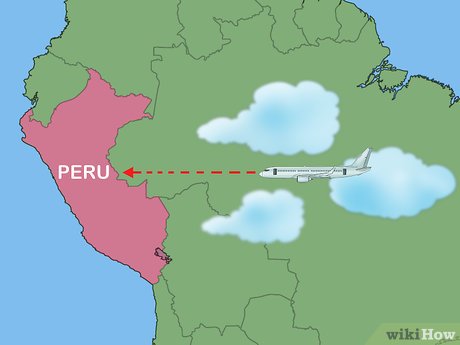
1Research the best times of year to visit. The tourist season in Peru is May to September. When deciding when to take your trip, consider weather as well as when attractions are open.XJune to August is the driest part of the year, ideal for hiking the Inca Trail and seeing Machu Picchu.The months between March and May or September and November are ideal for tourists who want to avoid the high season but who don’t mind a little rain. These are good times to visit Arequipa or the rainforests.Between December and February, many trails, including the Inca Trail, are closed. This is the rainy season in Peru, and it is also the least busiest time for tourists. Many people enjoy the beach and coastal areas during this time.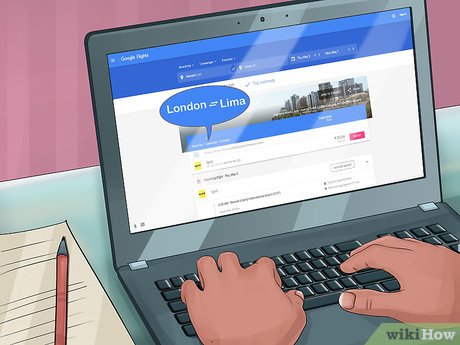
2Book a flight to Lima. Most flights go into Lima, the capital city. You can get flights from anywhere in the world to Peru. Use travel comparison sites to find the best deal. Remember that you may have a few layovers when traveling.XIf flying from the U.S., expect a ticket to cost around $1000-1500 USD. Direct flights leave from Newark, Atlanta, Miami, and Houston.From Canada, flights typically cost between $900-1500. All direct flights leave from Toronto, which is an 8-hour trip.Travelling to Lima from the UK can take between 12 and 22 hours. These flights cost between £750–£1200. As of 2018, there are only seasonal direct flights from the U.K. to Peru.Flights from Australia and New Zealand can cost around $2800-4000 AUS or $3600-5000 NZ. You will need to switch planes at some point in the journey.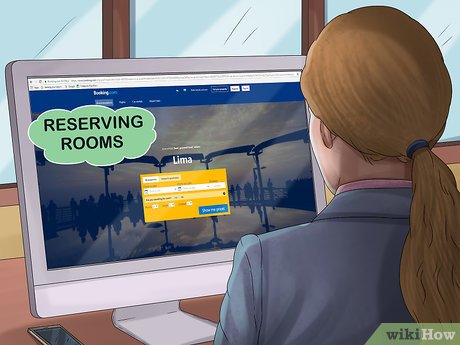
3Reserve rooms in a hotel or hostel. Always read reviews of your hotel or hostel online to make sure it is clean, safe, and legitimate. Reserve the rooms for your stay ahead of time so that you can go straight to your lodgings from the airport.XBudget hotels can start at 40 Sol ($12.50 USD) while a high-end hotel room might be around 300 Sol ($93 USD) a night.Hostels typically cost around 24 Sol ($7.50 USD) a night. Look for well-reviewed hostels online. Check their location on a map to see if they’re close to tourist destinations.
4Contact a travel agency to help you plan your trip. An authorized tourist agent can help you plan your trip and make sure you see popular attractions. They may also offer discounts that you can’t find anywhere else. Tell the travel agent your dates of travel and budget.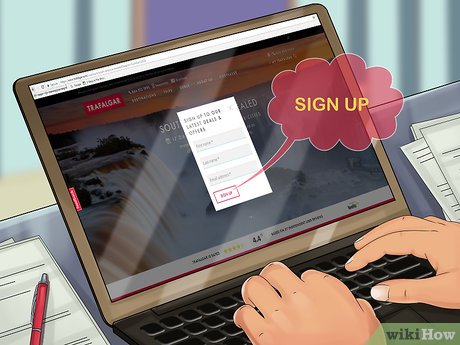
5Sign up for a guided tour of Peru if you want easy transportation. If you’re anxious about traveling in a foreign country or if you want an easy, stress-free trip, a guided tour may be right for you. This tour will be conducted in your own language with other tourists. You may travel by bus directly to popular locations. Some tours even handle booking flights and hotel rooms for you.X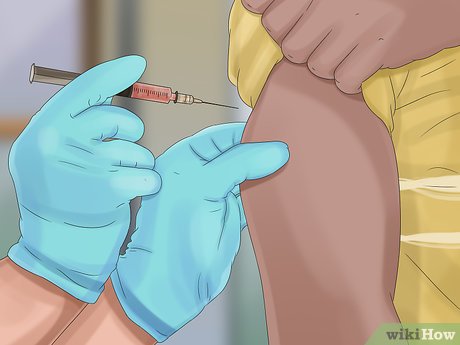
6Vaccinate yourself against infection. Malaria prevention is recommended before traveling. Additionally, yellow fever vaccinations are necessary if you plan on visiting jungle regions, such as Iquitos or Manu National Park.XTo get a vaccination, call your doctor and tell them that you are planning to travel to Peru. Your doctor will order the proper vaccinations or refer you to a doctor who can give them to you right away.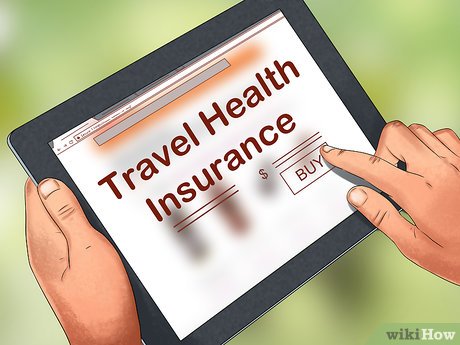
7Purchase travel health insurance. Most health insurance plans won’t cover international travel. Call your health insurance provider to see if they offer a plan that will cover you during your trip in Peru. Some travel agents may also sell travel insurance with a health plan.These plans generally will cover illness, injury, sudden death, or medical evacuation (in case of an emergency).Part 2Part 2 of 5:Packing for your Trip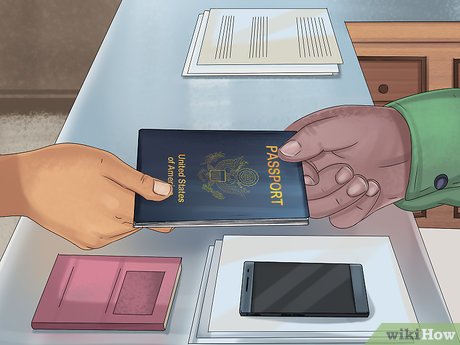
1Obtain a passport or visa if needed. Passports can be obtained at post offices around the country. If staying for longer than 90 days or visiting Peru for work, study, or research , you need to acquire a travel visa via the Peruvian consulate.XIf you already have a passport, you need at least 1 blank page for your stamp into Peru. If you’ve run out of pages, contact your national embassy or passport agency.
2Buy an electrical adapter for Peru’s outlets. Electrical outlets in Peru operate at 220 volts. Plugs also have a different shape than they do in the U.S. or U.K. Make sure to bring electrical adapters and transformers so that you can charge your phone and computer.XYou can buy adapters and converters at electronics stores, luggage stores, or online.Peru uses flat 2-pronged plugs, similar to the type used in the U.S., or rounded 2-pronged plugs, similar to the type used in Europe (but not the U.K). Some U.S. plugs won’t fit Peru’s electrical sockets, however.
3Take extra medication just in case you get sick. If you take prescription medication, bring extra just in case you are delayed. Anti-diarrhea medication, such as Imodium or Pepto-Bismol, is a good idea as well. If you’re hiking the Inca Trail, bring ibuprofen or acetaminophen for altitude sickness.XWhile you may be able to purchase some medication in Peru, you may not recognize the brands. It is easier to bring it with you from your home country.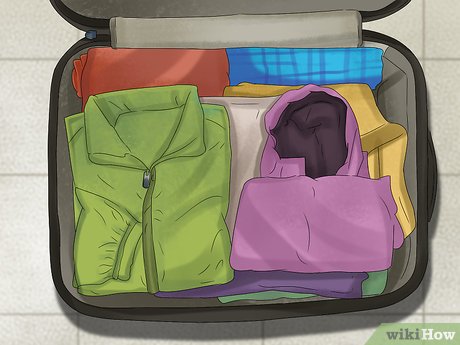
4Bring clothing dependent on the time of year and location of your stay. Peru is a large country with many different regions. Research your destination to learn what you should bring with you. In general, a light jacket, raincoat, comfortable pants, and t-shirts are needed.XPack for varying temperatures if visiting the Andean highlands. The temperature can drop quickly in the highlands, so bring heavy clothing and coats, especially if visiting the highest elevations.Bring cool clothing and rain gear if visiting the Eastern lowlands. Temperatures can reach 97 °F (36 °C), and much of the year is hot and rainy. At night, a light jacket will be necessary.Pack for warmth if visiting the Pacific Coast. Bring lighter jackets for the winter. Pack shorts and short sleeves or cooler clothing year-round.Dress for mild weather and rain if visiting the central or southern coast.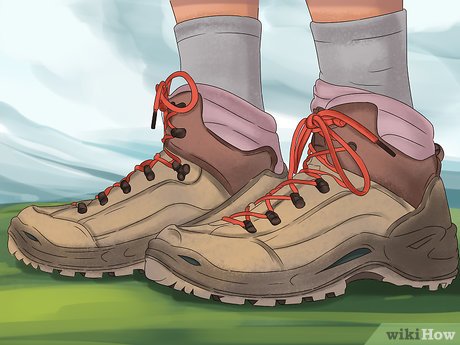
5Wear comfortable walking shoes. Many of the attractions in Peru require some walking and physical exertion. Bring hiking boots or other sturdy closed-toe walking shoes with a rubber sole.XIf you’re going to the beach or coastal regions, make sure to pack sandals as well.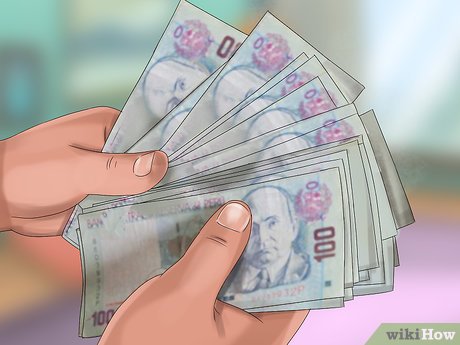
6Change your money to Nuevo Sol. Many shops and restaurants in Peru will not accept credit cards. It is best to carry small bills of Nuevo Sol, the currency of Peru. Before you leave, exchange your money at a bank, airport, or currency exchange. In Peru, you can also exchange currency at some hotels.XTo get Sol in your home country, visit a currency exchange or bureau de change. These are housed in airports, banks, and some post offices. You will pay them money and a fee in exchange for Sol in cash.Many places in Peru will accept the U.S. dollar. While it is best to use Nuevo Sol, carry some dollars with you just in case.Denominations of 50 Sol or less will be most convenient.Part 3Part 3 of 5:Getting Around Peru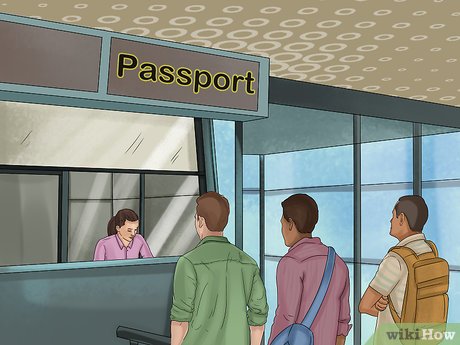
1Pass through border control when you arrive in Peru. When you land, you will be taken immediately to customs. Wait in line and fill out any forms given to you in line. When you are called to the window, show the agent your passport and your return ticket.XThey may ask you if you have anything to declare. You must declare any cash over $10,000 USD.Your return flight out of Peru is your proof of exit. If you are leaving Peru by bus or boat to another South American country, show the customs agent your tickets or reservations. If you don’t have proof that you intend to leave the country, you may be denied entry.In some cases, you may be selected for a random search of your belongings. You may be denied entry or even arrested if you try to bring in drugs, weapons, plants, animals, or pesticides.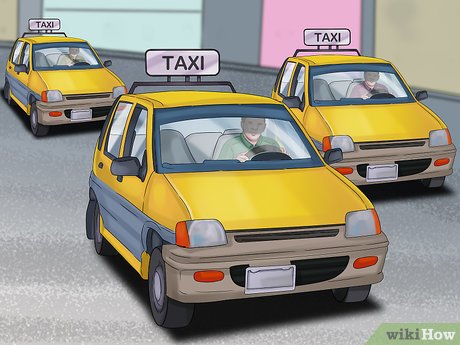
2Use only official, licensed taxis to get around. Only get into taxis that have “taxi” signs on top of the card. The license plate on the front of the car should have a yellow strip on the top with a Peruvian flag. Ask to see the driver’s taxi license, which should be hanging from their mirror.XTaxis in Peru do not run on meters. Ask your taxi driver up front what the fare will be. Don’t be afraid to haggle. Typically, a cab from the airport into Lima will cost around 40 Sol (or $12.50 USD).Some unregistered taxis will have a sticker on the window or dashboard that says “Taxi.” These are not official licensed taxis. Do not get into these cars.Taxi drivers in Peru are often paid to bring travelers to certain hotels. They may try to tell you that your booked hotel is closed or a bad place to go. This is a common scam. Insist that you are taken to your proper hotel or take another taxi.
3Use ride sharing apps like Uber to get around. If you’re nervous about identifying taxis in Peru, Uber is an option in major cities like Lima and Cusco. Pull up your Uber app and call a ride, just as you would do in your home country.X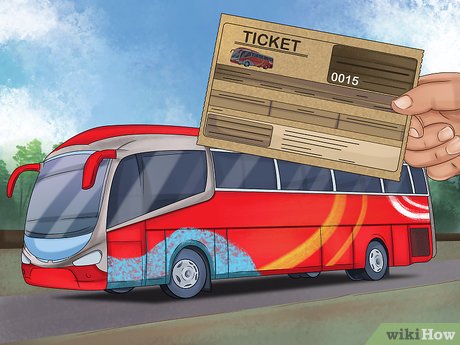
4Take buses to travel between cities. Buses offer 1 of the cheapest ways to go between cities in Peru. There are several major bus lines between Lima, Cusco, and other cities. You can buy tickets online before your journey or in person before you get on.XPeru Hop caters to foreign tourists traveling Peru. It travels between Lima and Cusco, with stops in Nazca and Arequipa. It stops outside many major hotels.Cruz del Sur is a reputable and established bus company that can take you to any major city. The drivers likely won’t speak English, however.There is an airport shuttle that goes from the Lima airport into the city. This is called Airport Express Lima. It travels every 30 minutes and takes tourists to Miraflores, near many hotels.Keep your belongings close while traveling on buses in Peru. Theft is common on public buses and in bus depots.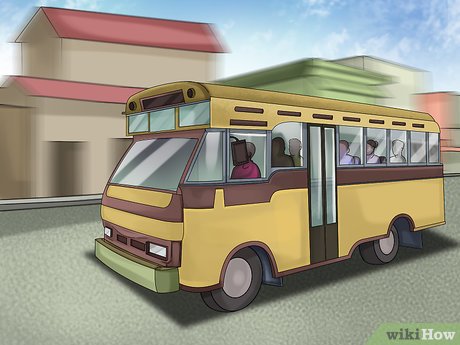
5Use colectivos with caution. A popular form of transport among locals, colectivos are mini-buses that provide local and long-distance transit. These are a cheap way to get around in Peru, but they are not the safest. Accidents with colectivos are common, and there is a higher likelihood of theft on them.XPart 4Part 4 of 5:Sightseeing in Peru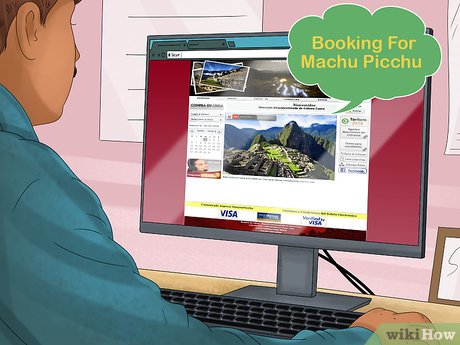
1Book early to see Machu Picchu. Machu Picchu is one of the most famous ancient sites in the world. To reach this destination, visit the historic city of Cusco. Reserve your trip months in advance, as tickets can book up quickly.XGet your tickets on the official government website here: http://www.machupicchu.gob.pe/. You must pay with a Visa credit card. If you don’t have 1, print out your reservation and pay at any branch of Banco de la Nación de Peru once you are in Peru.Alternatively, hire a guided tour. These tours will purchase the tickets for you, but be wary of scams. Research your tour company ahead of time. Do not purchase tour tickets off the street in Peru, as these may be scams.To get to Machu Picchu, take a train from Cusco to Aguas Calientes. There are many trains that leave each day, but it is also advisable to book in advance through Peru Rail or Inca Rail.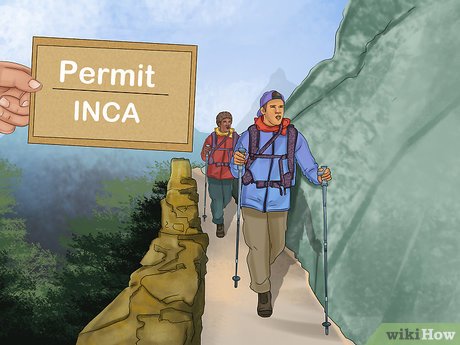
2Get a permit to hike the Inca Trail. The Inca Trail starts at Sacred Valley in Cusco and ends at Machu Picchu. It takes several days to complete. Only 500 people a day are given permits to hike this trail. To get a permit, you must hire a guide through a government sponsored tour company.XThese tour companies include Andean Treks, Mountain Travel Sobek and Peru Sur Nativa. You can verify if a tour company is legitimate by checking the Machu Picchu website at http://www.machupicchu.gob.pe/.The Inca Trail is an extremely difficult hike. Only experienced hikers should attempt it.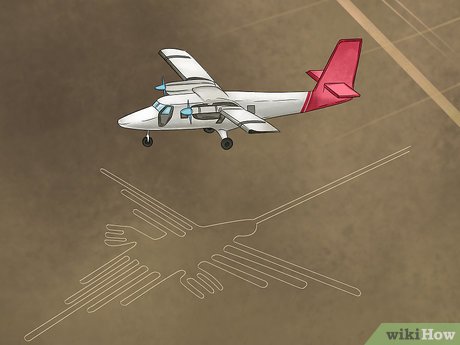
3Go on a plane tour to see the Nazca Lines. The Nazca lines are ancient designs built into the ground. To see them, visit the cities of Pisco or Nazca. Hire a flight tour to soar over the lines and see their brilliant designs.XTo check the safety of the tour company you are using, ask for the flight registration information. Search this information on a website like Aviation Safety Network. This will show you the history of the airplane you may be going on.You can book a flight ahead of time online by searching for Nazca line tours.Be wary that these flights may cause air sickness.
4Visit the Islas Flotantes de los Uros. This floating city is the home of the Uros people. Once there, you can see their wonderful boats and learn about their unique culture. To get there, go the city of Puno and pay for a boat tour. This tour will take about 2 hours to reach the Islas Flotantes at Lake Titicaca.XTo avoid being scammed, do not buy a ticket before you arrive. Pay when you are at the boat.Look up reputable tour companies ahead of time online. Read reviews to make sure your trip will be safe and legitimate.
5Explore Lima to see its museums and plazas. Peru has some beautiful architecture. The city of Lima is a cosmopolitan center with plenty to see and do. Spend some time seeing the churches, plazas, and art of Lima before you go. Some great places include:XMuseo Larco: a museum with a famous gallery devoted to erotic sculptures.Miraflores District: a beautiful beach district with good dining and memorable sights.Plaza de Armas (sometimes known as Plaza Mayor): the historical center of Lima.Convento de San Francisco: an old church with both a stunning library and deep catacombs.Part 5Part 5 of 5:Learning Peruvian Customs
1Memorize a few simple Spanish phrases. Spanish is the national language of Peru, so be sure to brush up on your Spanish before travelling. Bring an English to Spanish phrasebook on your trip to make communication easier or download an app like Google translate. Some simple phrases include:XDo you speak English?: ¿Habla inglés?Where is the bathroom?: Dónde está el baño?How much does it cost?: Cuánto cuesta?I do not understand: Yo no comprendo.
2Try the local food and drink. Peruvian cuisine is delicious, fresh, and locally sourced. Make sure to try some of their unique and tasty dishes while you’re in the country. Some great things to try include:XCuy: a dish of guinea pig, often served roasted.Ceviche: raw fish marinated in lime juice and spices.Pisco: a grape brandy that can added to many cocktails.Pollo a la brasa: A rotisserie chicken that comes with many dips.
3Carry bottled water with you to avoid drinking tap water. The tap water in Peru can make many travelers sick. Many hotels will give you bottles of water in your room. Use these to brush your teeth, wash food, and drink. Also make sure to buy bottled water to carry with you as you travel.X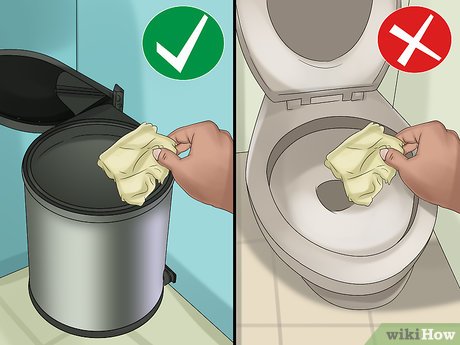
4Throw your toilet paper in the trash can, not the toilet. When you travel, you should see trashcans next to every toilet. Toss your toilet paper in these bins instead of flushing it down the toilet. Some of the pipes in Peru will clog if toilet paper is flushed.X








